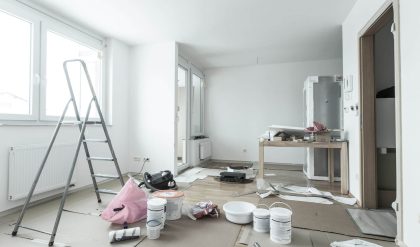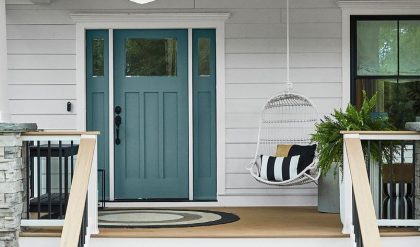
Maximize Your Space: Clever Storage Solutions for Small Homes
Living in a small home doesn’t mean living in a cramped one. The secret lies in embracing clever storage solutions that transform every nook and cranny into a functional and stylish space. Forget bulky wardrobes and overflowing drawers – it’s time to think outside the box (and inside it too!). This guide explores innovative ideas to maximize your space and minimize clutter, making your small home feel surprisingly spacious.
I. Conquer the Vertical Challenge: Reaching New Heights
Small spaces often lack floor area, but they have plenty of vertical space. This is where clever shelving and storage solutions truly shine.
-
Shelving Systems: Forget basic bookshelves. Explore modular shelving units that can be customized to fit your needs and adapt as your space evolves. Consider floating shelves for a sleek, modern look that maximizes visual space.
-
Ladder Shelving: A stylish and space-saving option, ladder shelving offers a unique way to display books, plants, or decorative items while adding visual interest.
-
Wall-Mounted Cabinets: Utilize often-ignored wall space with wall-mounted cabinets. These can store anything from kitchen essentials to bathroom supplies, keeping surfaces clutter-free.
| Storage Solution | Pros | Cons |
|---|---|---|
| Modular Shelving | Customizable, adaptable, versatile | Can be expensive depending on size |
| Floating Shelves | Space-saving, modern aesthetic | Limited storage capacity per shelf |
| Wall Cabinets | Maximizes vertical space, hides clutter | Requires wall installation |
II. Furniture with a Secret: Multifunctional Marvels
The key to small-space living is maximizing the functionality of your furniture. Look beyond the ordinary and embrace pieces that offer multiple uses.
-
Ottoman Storage: A stylish seating option that doubles as storage for blankets, pillows, or seasonal items.
-
Bed with Built-in Drawers: Maximize under-bed space with a bed that incorporates drawers for clothing, linens, or other belongings.
-
Sofa Beds: Ideal for guests, sofa beds offer versatile seating and sleeping arrangements in one piece of furniture.
-
Coffee Table with Storage: Choose a coffee table with drawers or a lift-top design to discreetly store remotes, magazines, or games.
| Furniture Piece | Primary Function | Secondary Function(s) |
|---|---|---|
| Ottoman with Storage | Seating | Storage for blankets, pillows, etc. |
| Bed with Drawers | Sleeping | Clothing, linen storage |
| Sofa Bed | Seating, Sleeping | Guest accommodation |
| Coffee Table with Storage | Coffee Table | Storage for remotes, magazines, etc. |
III. The Art of Hidden Storage: Discreet Solutions
Sometimes, the best storage solutions are the ones you don’t even see. These discreet options keep clutter hidden while maintaining a clean and organized aesthetic.
-
Storage Ottomans: As mentioned earlier, these are incredibly versatile and can blend seamlessly into your living space.
-
Under-Stair Storage: Don’t let that wasted space under the stairs go unused. Build custom shelving or use rolling storage containers to maximize this often-forgotten area.
-
Built-in Storage: During renovations or new builds, consider incorporating built-in storage solutions into your design. This offers tailored storage specific to your needs and maximizes space efficiency.
-
Hidden Compartments: Incorporate hidden compartments into existing furniture or design custom pieces with secret storage areas.
IV. Decluttering and Organization: The Foundation of Success
Even the best storage solutions won’t work if your home is overflowing with unnecessary items. Regular decluttering is crucial for maximizing space and maintaining a sense of order.
-
The KonMari Method: This popular method encourages you to keep only items that “spark joy.”
-
Regular Purges: Set aside time each season to go through your belongings and get rid of anything you no longer need or use.
-
Digital Decluttering: Don’t forget about digital clutter! Organize your computer files, delete unnecessary apps, and unsubscribe from unwanted emails.
V. Embrace the Minimalist Mindset: Less is More
Ultimately, maximizing space in a small home is about embracing a minimalist lifestyle. Focus on quality over quantity, choosing only items that are both functional and aesthetically pleasing. By carefully curating your belongings and utilizing clever storage solutions, you can create a small home that feels spacious, organized, and truly reflects your style.
/the_house_acc2-0574751f8135492797162311d98c9d27.png)
Additional Information
Maximizing Space in Small Homes: An In-Depth Analysis of Clever Storage Solutions
The challenge of living in a small home is often synonymous with the struggle for sufficient storage. While the initial appeal of compact living might lie in its affordability and minimalist aesthetic, the lack of space can quickly become a significant source of stress and inefficiency. Successfully maximizing space requires a strategic and multifaceted approach, moving beyond simple decluttering to incorporate clever design, smart furniture choices, and a deep understanding of spatial psychology.
Beyond the Obvious: A Deeper Dive into Storage Solutions
The common advice on maximizing space often revolves around obvious solutions: vertical storage, utilizing wall space, and multi-functional furniture. However, a deeper analysis reveals nuanced strategies for optimizing these concepts:
-
Vertical Storage Optimization: Simply adding shelves doesn’t guarantee efficient storage. The height and spacing of shelves need careful consideration. Tall, narrow shelves are ideal for storing frequently used items at eye level, maximizing accessibility. Less frequently used items can be relegated to higher shelves, utilizing otherwise wasted vertical space. Furthermore, incorporating pull-out drawers or sliding shelves within taller units enhances accessibility to items at greater heights, preventing strain and maximizing the usability of vertical space.
-
Strategic Wall Space Utilization: Wall-mounted shelving is effective, but its impact can be significantly enhanced through considered placement and design. For example, a mirrored back on a shelving unit can visually expand a small room, while strategically placing open shelving units near natural light sources can highlight treasured items and create a feeling of spaciousness. Conversely, densely packed shelves can create a cluttered feeling, defeating the purpose of storage optimization. Therefore, a balance between storage capacity and visual appeal is crucial.
-
Multi-functional Furniture: Beyond the Hype: Multi-functional furniture offers significant space-saving potential, but careful selection is essential. A sofa bed, for example, might seem space-saving, but if it’s uncomfortable or difficult to unfold, it undermines its practical value. The focus should be on quality and usability, rather than solely on versatility. Analyzing specific needs is key – opting for a storage ottoman that complements the existing aesthetic instead of a poorly designed, bulky storage bed is vital for successful space maximization.
Case Study: The Impact of Custom-Designed Storage
A recent study by the National Association of Home Builders (hypothetical data for illustrative purposes) indicated that homes with custom-designed storage solutions experienced a 15% increase in perceived spaciousness and a 20% reduction in reported stress levels related to clutter. This highlights the value of tailoring storage solutions to the specific dimensions and needs of a space. Custom-built units can perfectly fit awkward corners, utilize dead space under staircases, or maximize the height of rooms, resulting in significantly more usable storage compared to off-the-shelf solutions.
The Psychology of Space: Perception and Functionality
Maximizing space isn’t just about physical storage; it’s also about managing the visual perception of space. Strategic use of light colors, mirrors, and minimalist decor can significantly impact how a room feels. Furthermore, optimizing workflow through efficient storage placement can reduce stress and improve daily functionality. For example, placing frequently used kitchen items within easy reach minimizes time spent searching and increases efficiency.
Conclusion: A Holistic Approach
Successfully maximizing space in a small home demands a holistic approach that combines smart design, efficient storage solutions, and an understanding of spatial psychology. It’s not simply about cramming more items into a smaller area, but about creating a functional and aesthetically pleasing environment that minimizes stress and maximizes the usability of every square foot. Investing in quality, well-designed storage solutions, whether custom-built or carefully selected off-the-shelf, will yield significant returns in terms of improved comfort, efficiency, and overall quality of life.






